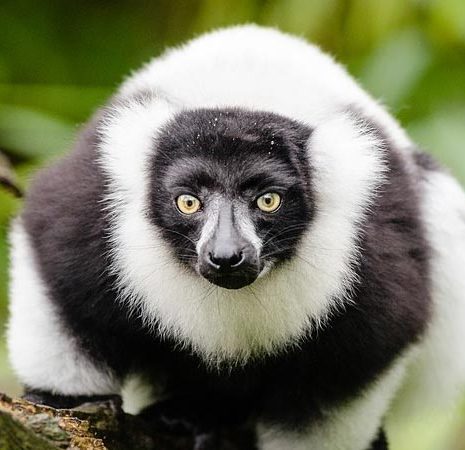The MFG rely on donations to continue their work
The MFG are grateful for all donations, no matter how big or small. If you’d like to donate, please click the button below, (please include the project name in the comments when you donate online).
Organisation & location
The Madagascar Fauna and Flora Group (MFG) are based is in Toamasina in Madagascar, with international headquarters is at the Saint Louis Zoo, USA. They work primarily in the eastern rainforests of Madagascar at two locations, Betampona Natural Reserve and the Parc Ivoloina.
Created in 1927, Betampona Natural Reserve, located 40 km north-west of Toamasina, was Madagascar’s first protected reserve. Once contiguous with the Zahamena forest corridor, Betampona’s 2,228 hectares of lowland rainforest are now an isolated patch surrounded by agriculture and degraded land.
MFG’s have a research station where Conservation Agents, project support staff and visiting researchers serve to protect the forest’s biodiversity.
The MFG works in close partnership with the Madagascar National Parks’ (MNP).
Biodiversity
Madagascar is known for its high levels of biodiversity and species endemism. It is part of the Madagascar and the Indian Ocean Islands Hotspot (defined by Conservation International). Betampona Natural Reserve is one of the few remaining intact areas of lowland forest in Madagascar, characterized by a high diversity of low canopy and small girth trees, of which there are at least 244 species.
Current animal species include:
- 89 species of birds
- 68 reptiles
- 76 amphibians
- 11 species of lemur
The people
Betampona is surrounded by nine villages, and in all of them the human population is growing rapidly. An initial socioeconomic survey found that most families have no more than a 500 square metre plot of land to cultivate rice and crops, 54% admitted to practicing slash-and-burn agriculture, 67% hunt their own bushmeat, and 97% gather wood from the wild. Food animals that are commonly found in the villages include chickens, ducks and pigs; however, problems with disease-related mortality result in limited production.
Threats
Current threats include logging, poaching, forest fires, increasing population demands, political instability, habitat fragmentation and invasive species (especially strawberry guava). The lemurs themselves are threatened by fragmentation leading to inbreeding and other problems.
Successes and ongoing projects
The MFG began surveying Betampona’s lemur populations in 1990, which led to the 1997–2001 re-introduction of captive-born Black-and-white Ruffed Lemurs (Varecia variegata) into the Reserve.
The MFG has worked with nearly 400 villagers to plant 42,000 trees covering 126 hectares around the Reserve.
Habitat conservation to protect areas from further fragmentation.
Reforestation of Betampona’s 100-meter Zone of Protection with native trees: This program began by partnering with the local communities, learning their needs and establishing tree nurseries at four villages.
Eradication of invasive exotic plants, including guava, one of the world’s worst invasives, in Betampona. The MFG has documented the extent to which invasives have penetrated the Reserve and their impact on the regeneration of native species. Unless the invasives are controlled/eradicated, the structure and ecological integrity of Betampona’s primary forest will be forever altered.
Community Development and Livelihoods Project around the Reserve: The MFG has adopted the slogan “Protect Betampona, Develop Communities”. To this end, the MFG will expand its Parc Ivoloina-based eco-agriculture program to communities around the Reserve. Identifying the appropriate vaccinations for chickens is a key action to increasing production. Improved production may reduce bush-meat hunting and serve as a source for generating income.
Research into four of the 11 lemur species found in the Reserve, to provide information to develop a strategy to maintain the viability of the Reserve’s populations of these four species.
The MFG has an established child education program (Saturday School) that helps rural children pass the national exam to enter secondary school while introducing them to locally relevant conservation messages.
The MFG’s capacity building program targets villagers, natural resource practitioners, politicians and university students in such subjects as eco-agriculture, environmental law, environmental education, ecotourism, research methods, and conservation biology.
The Living Rainforest connection
Numerous Living Rainforest staff have seen first-hand the destructive nature of the problems in Madagascar. As a result, the charity is currently a member of the MFG and fully believes it is a worthwhile cause.
Plants and animals from Madagascar to look out for at the Living Rainforest include the Madagascan Hissing Cockroach (Gromphadorhina portentosa) and the Rosy Periwinkle (Catharanthus roseus).
Find out more
http://www.madagascarfaunaflora.org/

